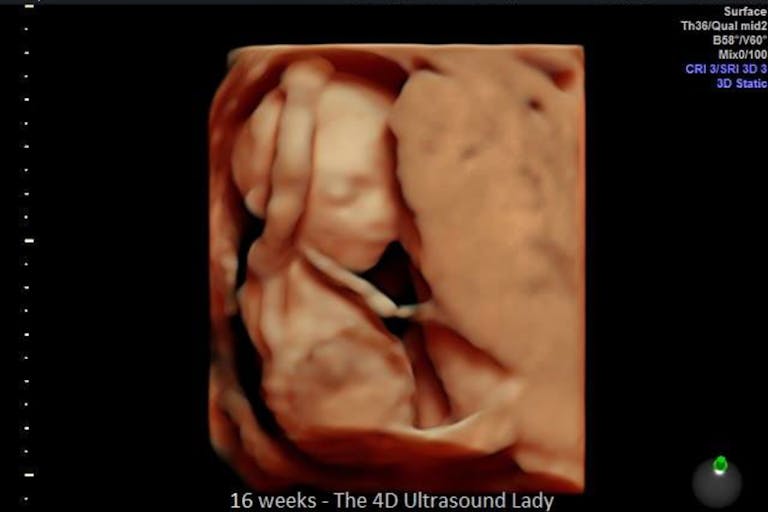
Can IVF ever be ethical? Here are some things to consider.
Nancy Flanders
·
Woman quits Planned Parenthood, shares abortion horrors
Ask former Planned Parenthood staffer Charjuana Hogan what her impression of the abortion giant is today, and she coins the corporation in four words: “A perception of deception.”
That realization, however, did not cultivate overnight. It brewed within her through the experiences she encountered during her four-year tenure at the abortion facility, and pressed her skepticism until the day she walked out the doors for good.
As a reproductive health assistant, Hogan began her career monitoring individuals who would come to Planned Parenthood for birth control or other services. Her particular branch in Riverside, California, was divided into two sections: reproductive health care and surgery. The surgical side, where abortions were done, was hardly trafficked by Hogan.
But an ever-increasing nudge prodded her that something about working at Planned Parenthood was just not right.
As a brand new employee at the abortion corporation, Hogan was pleased to learn that she would make almost $3 more per hour compared to the hospital where she was previously employed. She recalled making the transition from her position to the Riverside Planned Parenthood where a mutual friend was also employed. Hogan told Live Action that at the beginning of her employment, she truly enjoyed her line of work.
“I was offered a pay that I have never been offered before, and I looked forward to going to work every day,” Hogan said.
Her job duties seemed nothing out of the ordinary for a budding medical professional: Determine insurance eligibility for patients, ensure that documents were filled out properly, and assist the individuals who trafficked in and out of the facility. She began her time at the abortion facility with pay and title commensurate with an individual pursuing a career in the medical field.

However, Hogan said training never fully involved how abortion procedures were actually performed, nor was fetal development or the risks associated with abortion discussed.
The reality of abortion processes was shielded from most staffers, and only little information was provided when inquired.
While most Planned Parenthood staffers understood that abortion kills a child, Hogan said they justified it because they were not directly performing abortion procedures.
“They want you to look like you are helping women out,” Hogan said. “When they send you for training, they give you justification into why women get abortions.”
To employees, Hogan shares, abortion is always presented as a positive experience and a component of health care – employees are only helping women obtain the quality care that they need.
However, the reality of what took place on the surgical side of the abortion mill confronted Hogan almost daily as she went about her tasks. She recalled seeing staffers from the surgical side sitting in the lab that both units shared, sifting through pieces of aborted baby parts, and assembling the mangled remains of children from 4 weeks up to 19 weeks old – bloody hands, feet, and assorted body parts – back together. The sight shocked Hogan initially, especially when she could see the child she had aborted at seven weeks in the scattered remains.
“The parts were brought to the lab that the reproductive health and abortion side shared, and the remains were placed into a red biohazard trash bag like it was nothing,” Hogan recalled. “It kind of made me sad a little bit when I saw it.”
“I would just go out of the room, and it would be on my mind at some time and I would shake it off. Since I was still working there, I wanted to be blind.”
Article continues below
Dear Reader,
Have you ever wanted to share the miracle of human development with little ones? Live Action is proud to present the "Baby Olivia" board book, which presents the content of Live Action's "Baby Olivia" fetal development video in a fun, new format. It's perfect for helping little minds understand the complex and beautiful process of human development in the womb.
Receive our brand new Baby Olivia board book when you give a one-time gift of $30 or more (or begin a new monthly gift of $15 or more).
As the years passed, Hogan says her perception of the abortion giant began to change with greater intensity. She began to notice that Planned Parenthood’s portrayal of abortion was a very different story from the reality of what she saw each day. One training video, Hogan recalls, portrayed abortion as a pleasant experience, and it triggered doubts within her regarding Planned Parenthood’s honesty.
“We had training often on different types of things, Hogan said. “I was disturbed after watching a Planned Parenthood training video of women coming in for an abortion. The video said they felt relaxed, and that Planned Parenthood made [the patient] feel comfortable and happy. It was a perception of deception – like some happy product in a store, it popped right out at me.”
Hogan was also disturbed by the number of young girls – 14 to 15 years of age – who would come into the Planned Parenthood facility for an abortion during school hours. Sitting behind the receptionist area, Hogan would observe teenagers coming in scared and alone, seeking a secret abortion.
“Most patients were young and they didn’t want their parents to know,” Hogan said. “A lot of the girls that came in there were very uneducated in a lot of things. Working in the front desk, I would think, ‘Why aren’t these young girls at school? If they can’t even fill out this paperwork, what are they doing having sex?’”
At the other end of the spectrum, mothers would come in for late-term abortion procedures – some multiple times, using abortion as their birth control of choice.
“Women come in at 24 weeks, and I would see them come in that far along,” Hogan said. “Even if you are deceived about when it becomes a life, you for sure know it’s a life – your stomach is poking way out there.”
As she pondered these scenarios, Hogan never expected the quick exodus that she would personally make from the abortion industry.

Her exit came in the way of happenstance – yet there was nothing ordinary about this particular string of events. As she made her way from the facility to her car one day, Hogan was approached by a pro-life counselor named Deane who frequented the Planned Parenthood sidewalk. He struck up conversation with her, and shared with her the message of Jesus Christ and the truth about abortion. That conversation was a defining moment for Hogan, and it imprinted a deep-seated instinct that she needed to make her leave.
The following day, Hogan attended a Planned Parenthood “palooza” in San Diego to celebrate corporation employees. She recalls a strange grief she experienced after seeing registered nurses praised for performing first trimester abortions. She was struck by how the abortion giant touted its community services, announcing that more communities were now being “helped” by Planned Parenthood. Despite the jubilee all around her, Hogan says she did not enjoy herself. When she inquired of her pastor that evening if her employment at Planned Parenthood was in conflict with her new-found faith, he affirmed that she should consider leaving, and to her surprise, her decision was solidified the following day:
“The next day I was walking, and my co-worker corners me and tells me, ‘I hate my job. I hate what I do,’” Hogan said.
Because they were only acquaintances, she was surprised that her co-worker chose to confide in her, but saw it as another affirmation to leave. She called Deane and asked him to assist her out of the industry.
“I couldn’t do it independently,” Hogan said. “It took God to send someone along to help me out with that journey because I couldn’t do it by myself.”
Although she left Planned Parenthood on good terms, Hogan is not allowed on the premises. She said staffers are concerned that she will have Planned Parenthood shut down.
Now as a pro-life advocate, Hogan is beginning to discover the truth about abortion. Although it has been a challenging journey, she says she does not regret her decision. She hopes her story will encourage women contemplating an abortion to truly understand what abortion does to a child.
“My message and my dream would be for women to be educated – what is being done to them – and that would make a change,” Hogan said. “If they know what’s being done to them and when life begins, then there would be a change.”
Live Action News is pro-life news and commentary from a pro-life perspective.
Contact editor@liveaction.org for questions, corrections, or if you are seeking permission to reprint any Live Action News content.
Guest Articles: To submit a guest article to Live Action News, email editor@liveaction.org with an attached Word document of 800-1000 words. Please also attach any photos relevant to your submission if applicable. If your submission is accepted for publication, you will be notified within three weeks. Guest articles are not compensated (see our Open License Agreement). Thank you for your interest in Live Action News!

Nancy Flanders
·
International
Angeline Tan
·
Human Rights
Nancy Flanders
·
Human Rights
Angeline Tan
·
Human Rights
Angeline Tan
·
Guest Column
Right to Life UK
·
Analysis
Becky Yeh
·
Newsbreak
Becky Yeh
·
Newsbreak
Becky Yeh
·
Pop Culture
Becky Yeh
·
Newsbreak
Becky Yeh
·